Different types of cockroaches exist apart from the common American Cockroaches. Some are scavengers, omnivorous, and opportunistic while others favor a certain type of food.
Cockroaches can be some of the most important home pests. They can also carry viruses and bacteria such as Salmonella.
Various types of cockroaches live around the world. Many of them have spread from a specific habitat together with various industries and with travelers.
Table of Contents
Cockroach Identification
Not all cockroaches have the same size, color, and habitat. Different attributes make each species different and some species similar.
Cockroach size
Roaches are often associated with American Cockroaches which measure up to 1.6 inches. German Cockroaches measure around 0.5 inches while some of the smaller roach species barely measure 0.2 inches.
Most cockroaches in North America measure anywhere between 0.2 inches and 1.6 inches as adults.
Cockroach colors
Cockroaches can be brown, red, red-brown, dark brown, or black. Some may also show yellow or cream-colored margins.
Cockroach habitat
Cockroaches live almost anywhere. Some species are tied to human settlements while others may live in woodlands.
Only a small number of cockroaches are actual home pests as many prefer to live outdoors.
Types of Cockroaches
Here are some of the most common cockroach species in North America and around the world.
1. American Cockroach
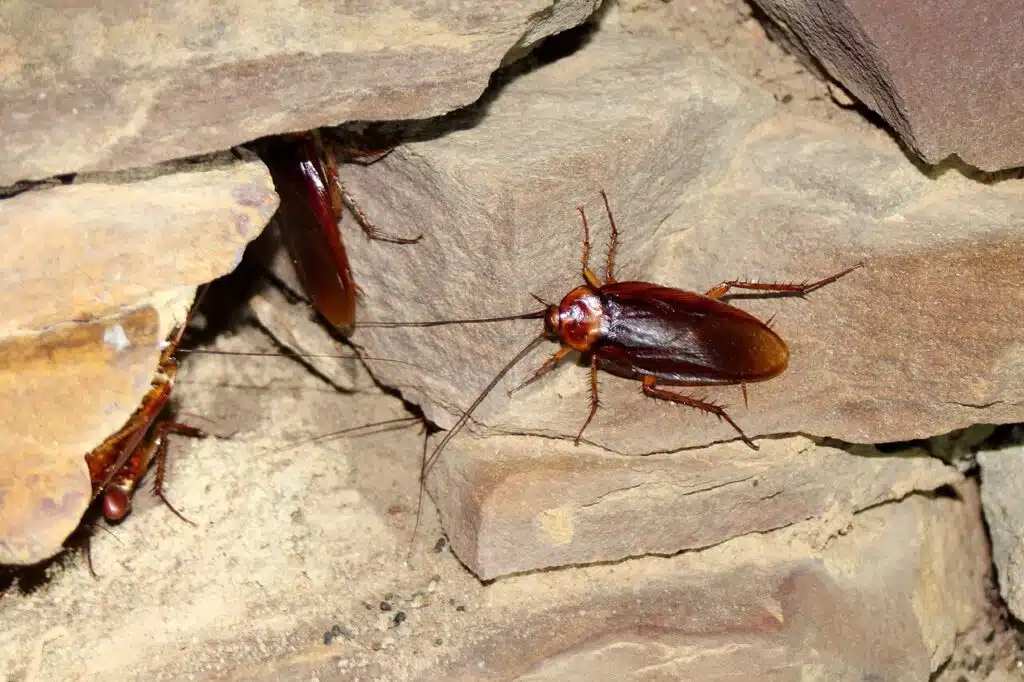
American Cockroaches (Periplaneta americana) are some of the most common types of roaches in the world. Unlike their name suggests, they are of African origin with an introduced status in the United States.
These cockroaches have a size of around 1.6 inches and a red-brown color.
American cockroaches can grow to a maximum size of 2.1 inches, being larger than other common species such as the German Cockroach and the Oriental Cockroach.
They are seen as pests in many parts of the world due to their omnivorous diet. They feed opportunistically which means they can feed on new items and different types of food daily.
These roaches feed on decaying or fermenting food. They eat bread, human hair, pieces of leather, carcasses, pieces of paper, and feces.
Diseases and viruses are spread by these cockroaches when they come in contact with food.
2. Smoky Brown Cockroach
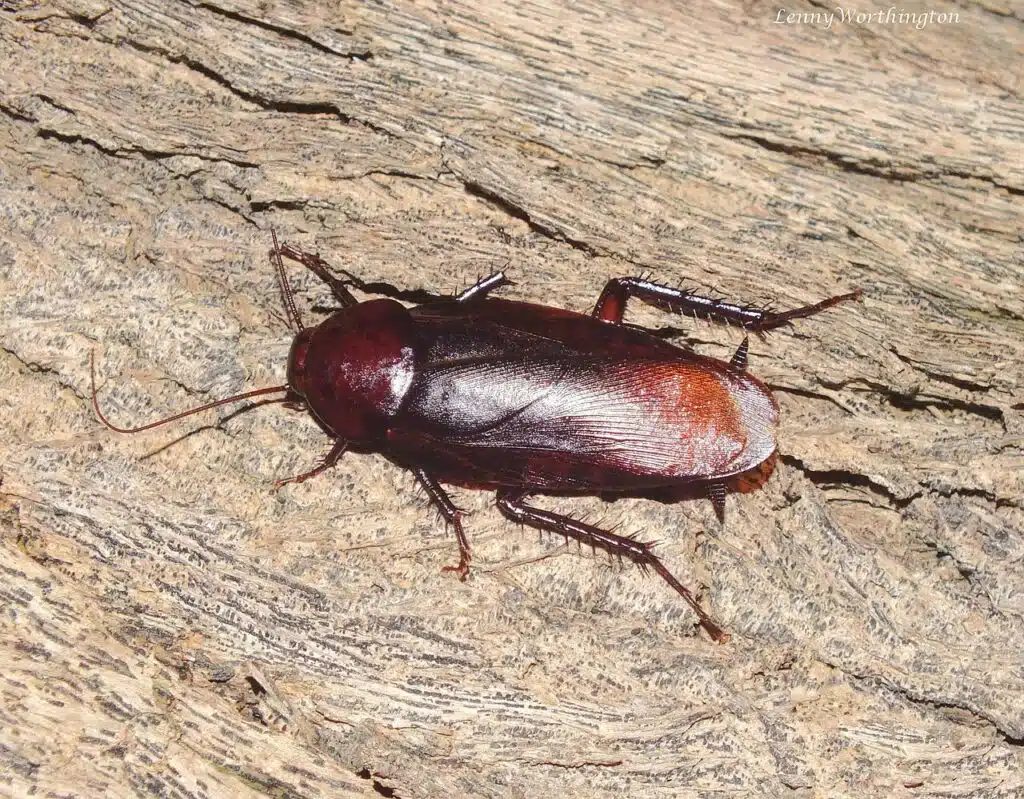
A dark brown color is specific to the Smoky Brown Cockroach (Periplaneta fuliginosa). While related to the American Cockroach, this species has distinct traits when it comes to temperature preferences.
Smoky Brown Cockroaches are among the species that love warm climates. They only live in Southern US states, Australia, and Japan.
Roaches of the species cannot survive cold weather outdoors. They might be able to survive indoors, but they can be looking to move out for moisture.
Smoky Brown Cockroaches move indoors and outdoors at night, due to high humidity preferences.
Dependent on warmth and moisture, Smoky Brown Cockroaches are just as detrimental as pests as the American Cockroach.
An omnivorous and opportunistic diet means Smoky Brown Cockroaches can spread diseases, mainly from feces.
3. Oriental Cockroach
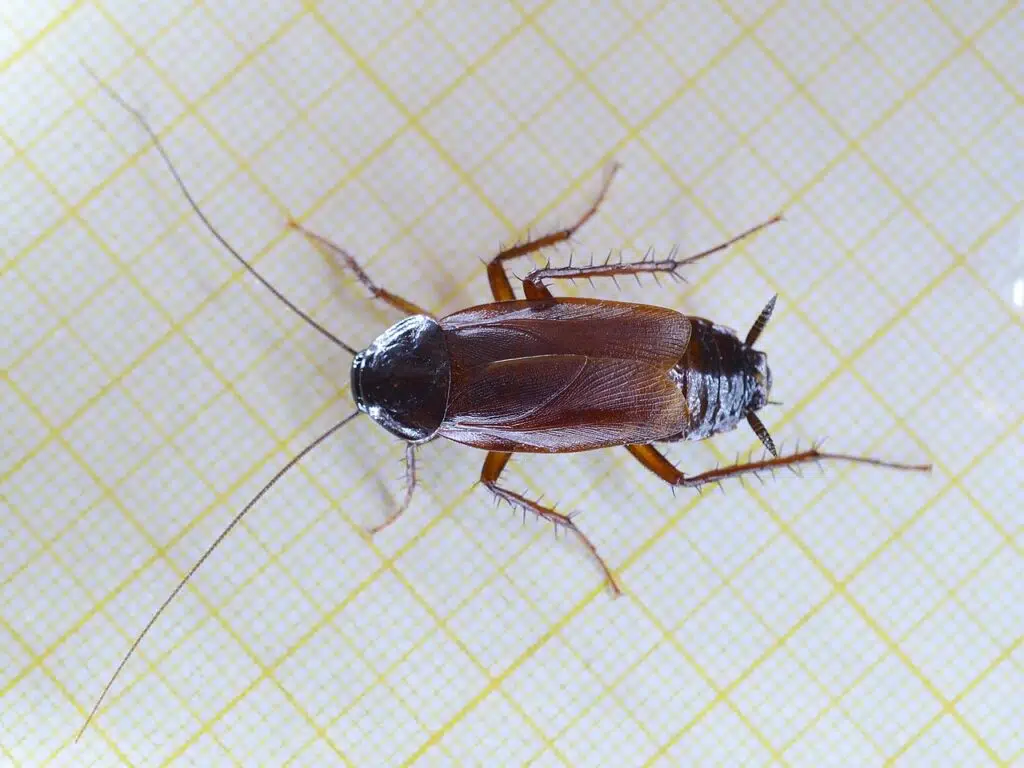
Larger than the German Cockroach but smaller than the American Cockroach, the Oriental Cockroach (Blatta orientalis) grows to a size of up to 1.14 inches.
These cockroaches have an almost black color and the tendency to only come out at night.
Many infested homes may appear roach-free during the day as these cockroaches hide during the day.,
A preference for high and very high humidity is attributed to the species.
This is one of the reasons why the species is seen around piping, sewers, drains, and under mulch or leaves.
The types of cockroaches can spread bacteria and viruses.
They are seen as major home pests in almost all areas of North America except some of the Eastern states.
4. Pale-bordered Field Cockroach
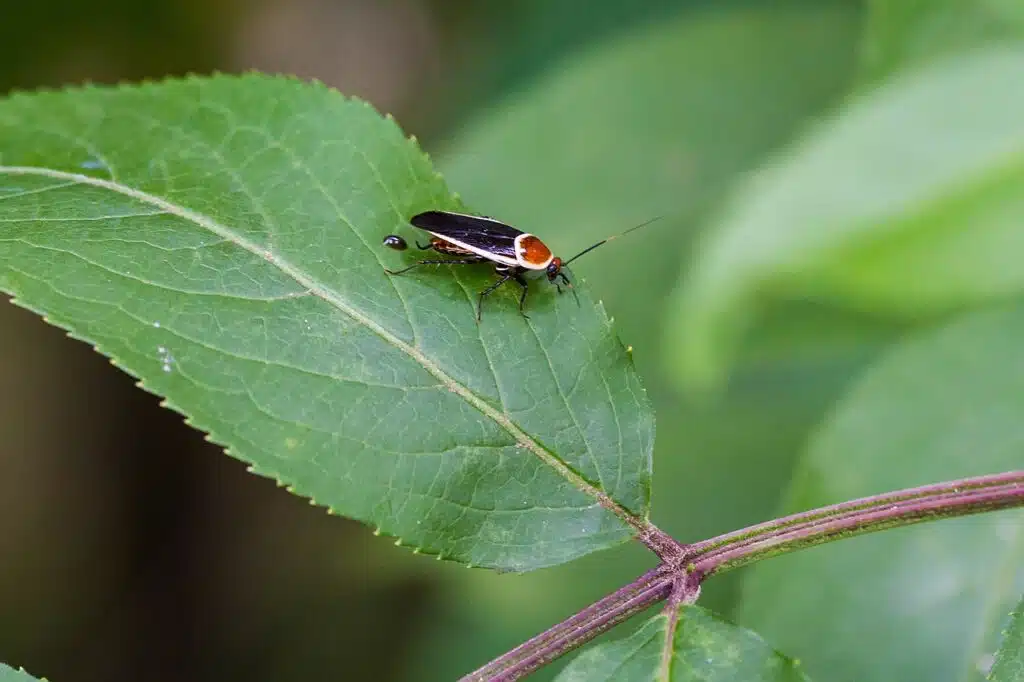
These types of cockroaches (Pseudomops septentrionalis) have contrasting bright margins which inspire their name.
Pale-bordered Field Cockroaches are considered more beautiful than other species given their pale margins and their dual color body.
These cockroaches may sometimes grow up to 1 inch but many remain smaller, measuring around 0.5 inches.
Native to Central America, the species is also present in Southern and Southeastern US states.
It doesn’t have a pest status in the house as it prefers to live outdoors in moist places.
The cockroach feeds on plants, meats, starches, and anything it can find outdoors as an omnivorous opportunistic eater.
It makes it indoors by accident but it doesn’t like to live in the house like other cockroaches.
5. Surinam Cockroach
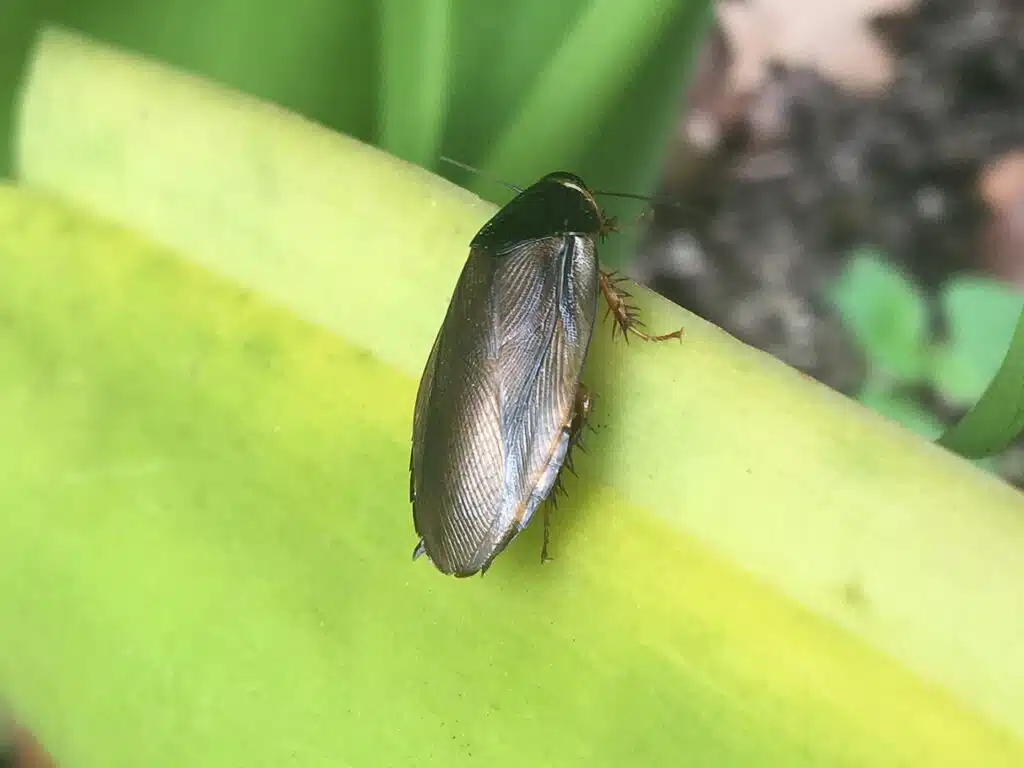
This species of cockroach (Pycnoscelus surinamensis) has a brown-to-black color. Native to Indonesia and Malaysia, the species has spread to most tropical regions of the world.
Surinam Cockroaches are spreading toward subtropical regions of the world today.
This species of cockroach is known as a crop pest and a greenhouse pest.
It doesn’t like living indoors as it needs soft plant fibers for food.
A common sight on tropical and subtropical plants, both outdoors and in greenhouses, the Surinam Cockroach is only a rare sight in homes.
This species is also present in the United States, but only in limited habitats.
Surinam cockroaches are found in Southeastern US states.
6. Turkestan Cockroach
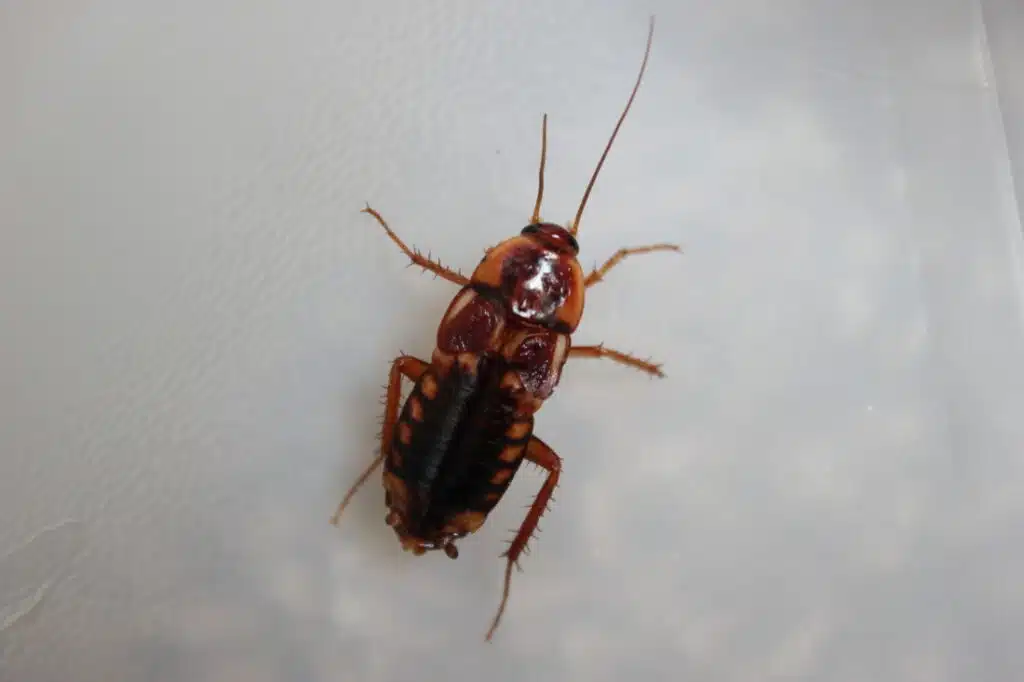
Red or black color is specific to the Turkestan Cockroach (Shelfordella lateralis), depending on its gender.
This is a species of cockroach that can grow up to a size of 1.2 inches.
Turkestan Cockroaches are native to Central Asia.
Introduced to the US, the cockroach has a terrestrial presence in the Southwestern regions of North America.
The cockroach doesn’t prefer to be indoors even if it can survive in homes with sufficient food.
You can find Turkestan Cockroaches in areas around homes and cities as the species lives close to the garbage and human waste that it uses for food.
A nocturnal nature is characteristic of the species which might even be seen flying toward lights in the house.
Only male Turkestan Cockroaches can fly.
7. German Cockroach
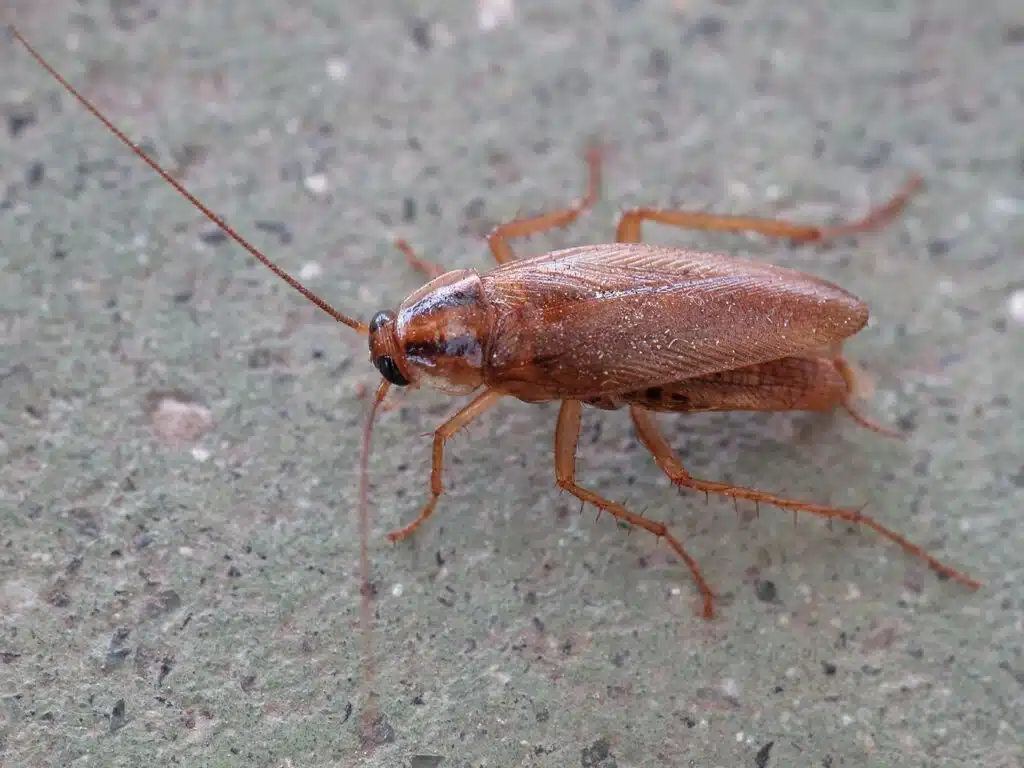
This type of cockroach (Blattella germanica) is small compared to the American Cockroach. It grows to a size of 0.6 inches and represents a red-brown roach pest.
Most commonly, the German Cockroach is mistaken for the Asian Cockroach. However, the Asian Cockroach can fly, particularly at night.
This species is a pest and it lives all around the world where humans also live.
It cannot survive areas with human activity, particularly cold homes as it needs warmth to survive.
The species is a scavenger and an opportunistic eater with the tendency to favor meats and decaying meats for food.
Fat-rich foods also attract this roach. It can be a major pest in the kitchen or restaurants.
High numbers of these cockroaches are seen in case of home invasions, mainly because it has no real predator once settled indoors.
8. Pennsylvania Wood Cockroach
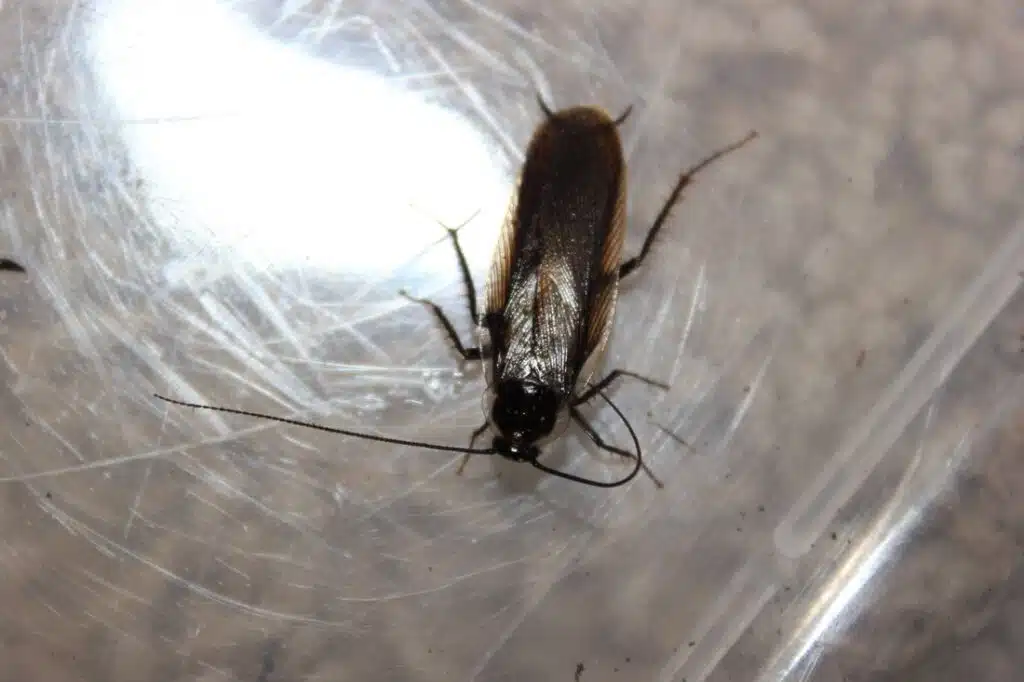
Pennsylvania Wood Cockroaches (Parcoblatta pennsylvanica) are found in Northeastern parts of the US. This species is native to woodlands in areas without much ground cover.
The cockroach has a dark brown color and it may grow to almost 1 inch in the case of males and 0.7 inches in the case of females.
Decaying organic matter is the main food for this species.
It can be found under tree bark, at the base of oak trees, or under the shingles of the house or the garage.
This species sometimes gets inside the house but it doesn’t reproduce in the house.
It moves from one place to another and it normally looks for a way out.
These types of cockroaches aren’t seen as house pests as they rarely venture indoors. Only a few of these cockroaches can be found indoors, on occasion.
Most homes where these cockroaches venture into are the homes close to the woodlands where they live.
9. Banana Cockroach
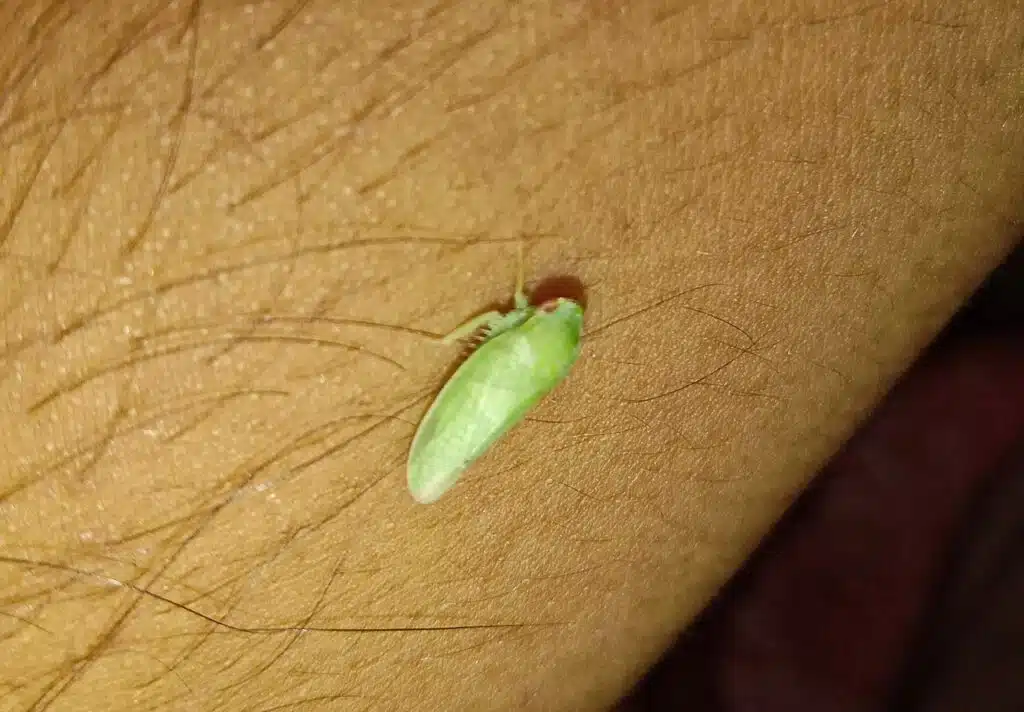
Also known as the Cuban Cockroach, The Banana Cockroach (Panchlora nivea) is a species with a green color.
Female Banana Cockroaches are larger than males, growing to a size of up to 24mm.
Cockroaches of the species can be found next to plants and trees.
They lay eggs in the ground, hidden under rocks, logs, and other objects.
Banana Cockroaches rarely make it indoors as they only live outdoors. On occasion, the cockroach might end up indoors attracted to various lights at night.
Banana Cockroaches don’t have a pest status and are sold as food in the pet industry.
10. Tawny Cockroach
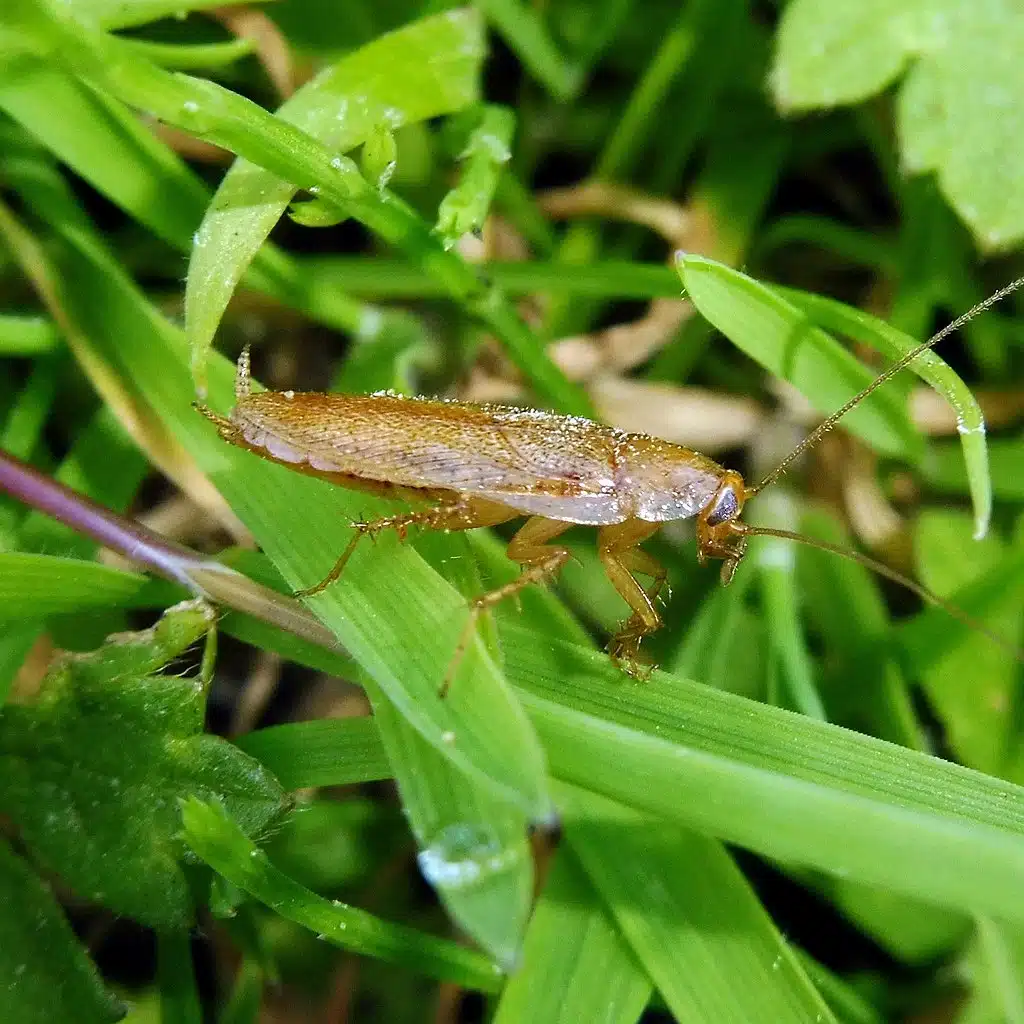
Tawny Cockroaches (Ectobius pallidus) have a brown color with various red and golden nuances.
Cockroaches of this species are native to Europe and are also found in North Africa.
Germany and The Netherlands are some of the countries where the species is most common.
They are tied to sandy dunes on beaches but they are commonly found on vegetation such as trees around these sandy terrains.
A common sight on tree bark, the species doesn’t have a pest status as it’s rarely found in high numbers indoors.
Growing to a size of up to 9.5mm, Tawny Cockroaches only make it indoors in homes close to their natural sandy habitat.
11. Australian Cockroach
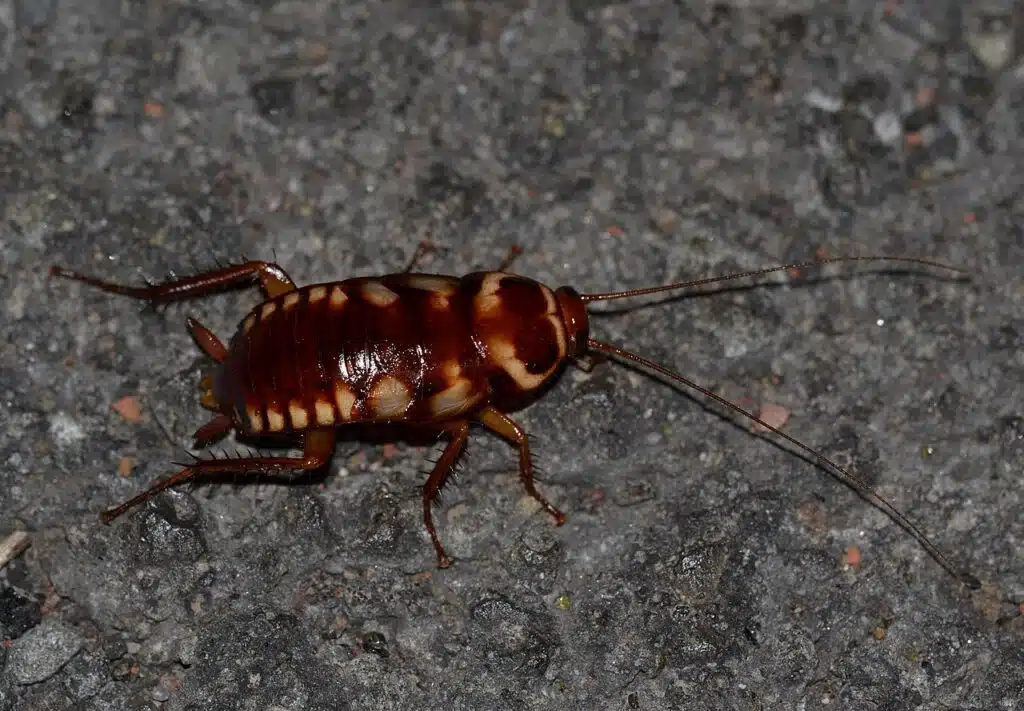
The Australian Cockroach (Periplaneta australasiae) is a species similar to the American Cockroach. It has the same brown color plus yellow differentiating marks.
Native to Africa, the species is now established on the Eastern Coast of Australia where it mostly lives outdoors.
With a preference for plants, the species lives outside of the house in warm climates as it cannot survive cold climates.
It struggles to survive even indoors in cold climates so it remains a species associated with Australia.
Smaller than the American Cockroach, the Australian Cockroach is a scavenger found outdoors with occasional indoor sightings, mainly looking for food and decaying food.
12. Florida Woods Cockroach
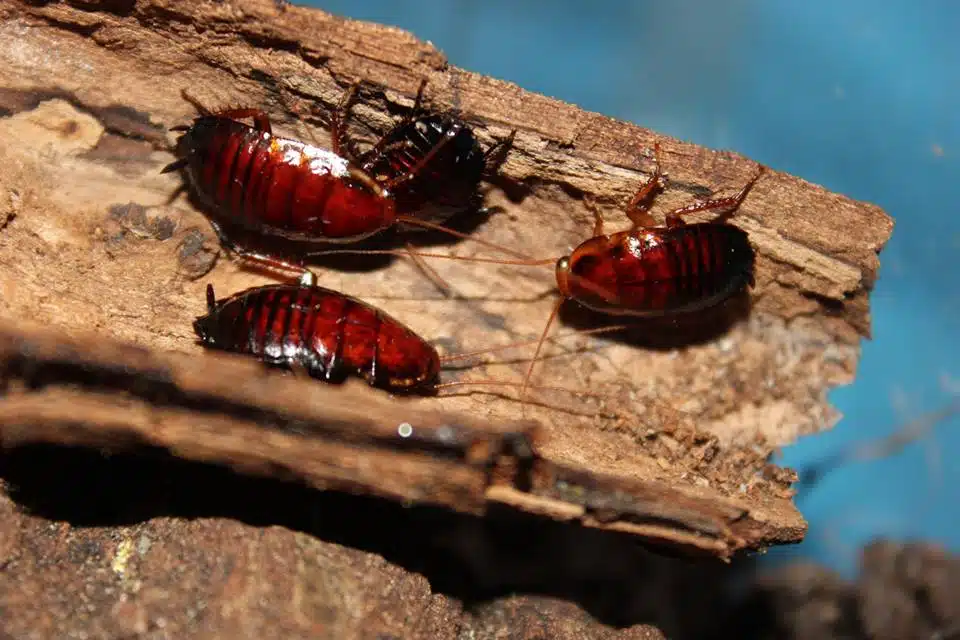
This species (Eurycotis floridana) is mainly found in Florida where it has a pest status. It grows to a similar size as The American Cockroach, sometimes reaching dimensions of up to 1.6 inches.
Florida Woods Cockroaches are among the species that like to eat decaying food and decaying plants.
It sometimes makes it indoors where it can multiply into large colonies.
The species has a dark red or red-brown color and it has wings, albeit without proper flying abilities.
Decomposing plants are among its favorite foods and it may look for an area of the house with mold to feed on.
It can be found in damp homes where mold is a problem either indoors or outdoors.
Florida Woods Cockroaches always favor multiplying in sheltered areas such as homes and under leaf litter.
13. Boll’s Sandroach
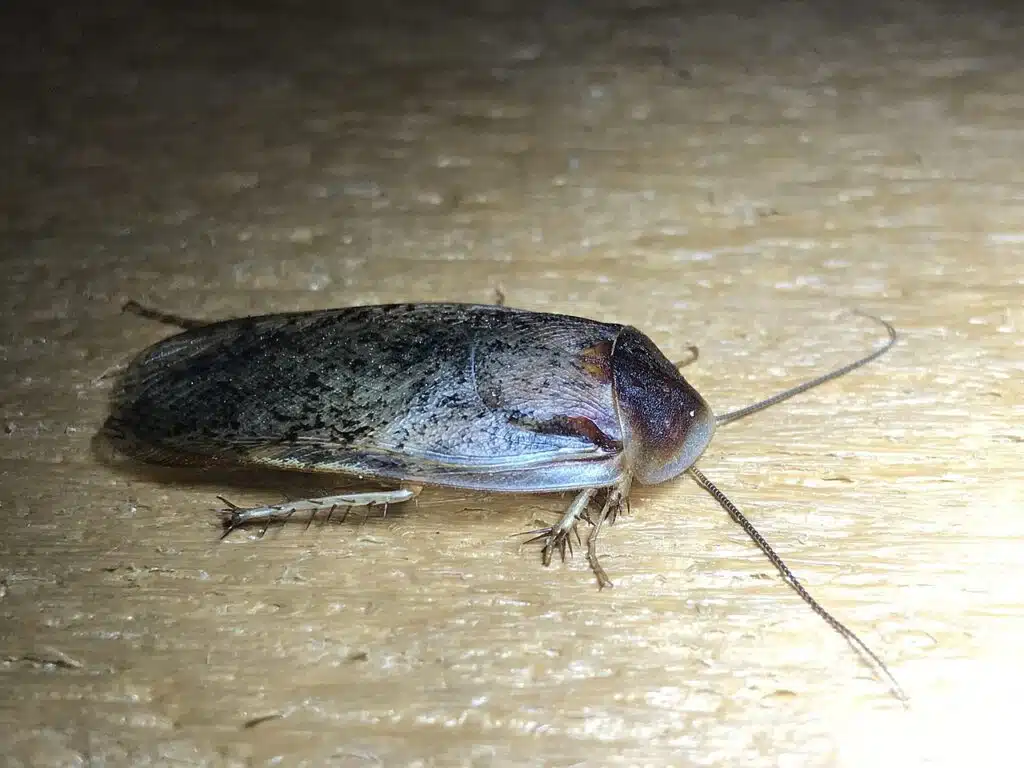
This species (Arenivaga bolliana) mostly lives in Southern Texas and Mexico. It’s one of the cockroaches which specifically targets feces in its diet, making it a vector for disease transmission.
Boll’s Sandroach is a species that feeds on wood rats’ droppings.
This cockroach grows to 30mm and they live under homes or rocks. Human settlements provide sufficient food and protection for wood rats and these cockroaches alike.
The species has a light brown color with a dark brown head.
It prefers loose sandy soil under homes, as do many types of rats.
In Mexico, the species is also found around orchards and gardens as wood rats are commonly seen eating fruit.
14. Western Wood Cockroach
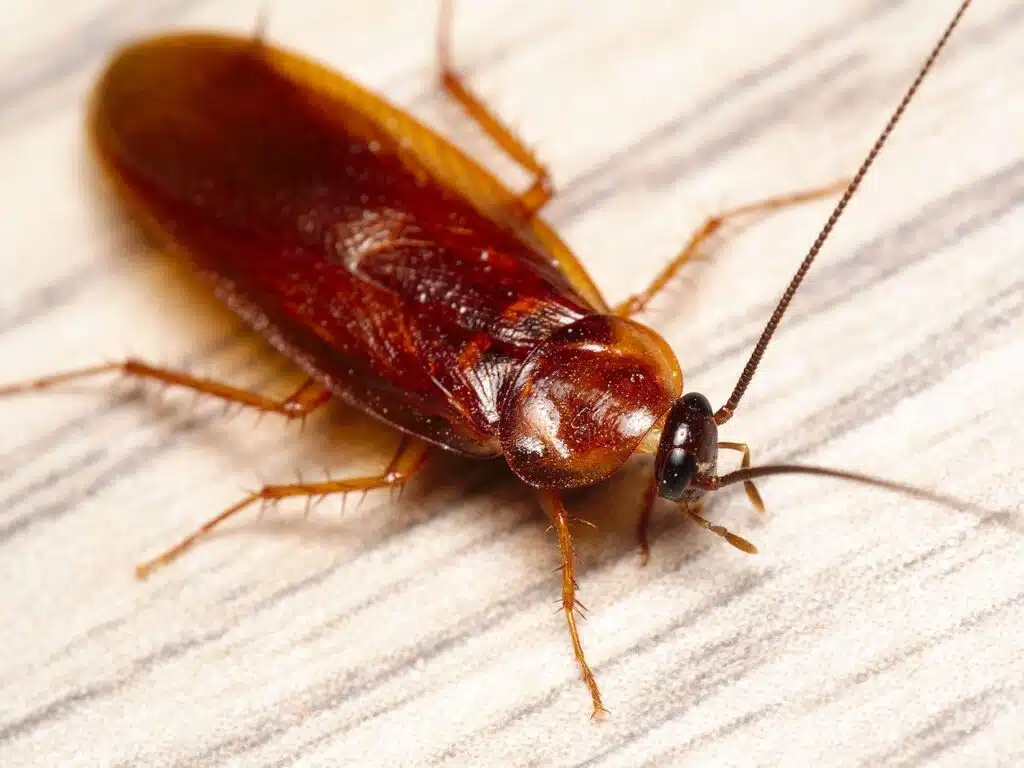
Common in Western North America, this species (Parcoblatta Americana) is more common in California than in other states.
While it can make it indoors, the Western Wood Cockroach is mainly a species that lives outdoors in chaparral, woodlands, and vegetation close to the Pacific Coast.
These roaches have a dark brown color and varying sizes. They rarely grow to a size of 0.6 inches.
The diet of the species is based on decaying organic matter of both animal and plant origin.
The Western Wood Cockroach may carry diseases as it eats rat droppings.
Ant mounds and ant colonies are common habitats where the Western Wood Cockroach is seen in California.
15. Three-lined Cockroach
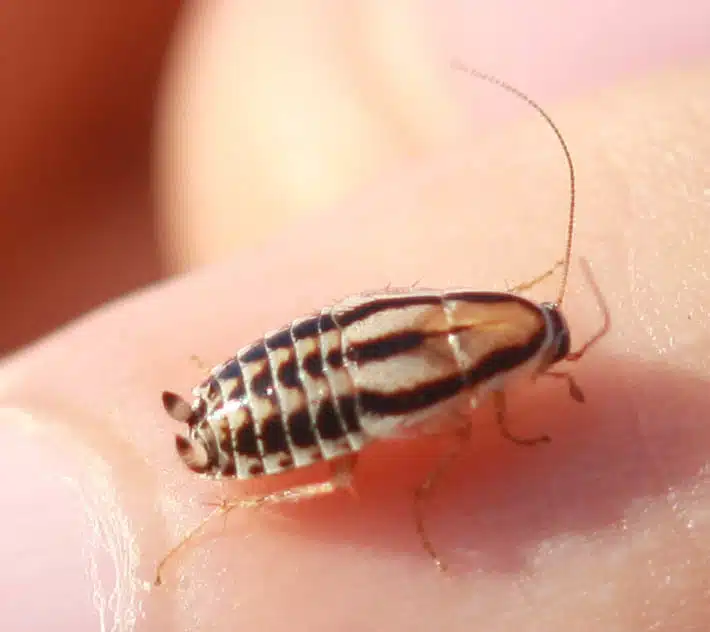
Three-lined Cockroaches (Luridiblatta trivittata) are native to Europe. They are an introduced species in North America with a growing presence on the West Coast.
Sometimes spotted in the summer, Three-lined Cockroaches are among the smallest types of cockroaches in the world.
Growing to a size between 4 and 6mm, these roaches might even go unnoticed in decaying plant matter.
A high preference for moisture under mulches is specific to the species.
Mostly interested in plants, these types of cockroaches rarely get indoors.
Due to being a few times smaller than most other pest roaches, it can be difficult to keep all Three-lined Cockroaches out of the house.
16. Virginia Wood Cockroach
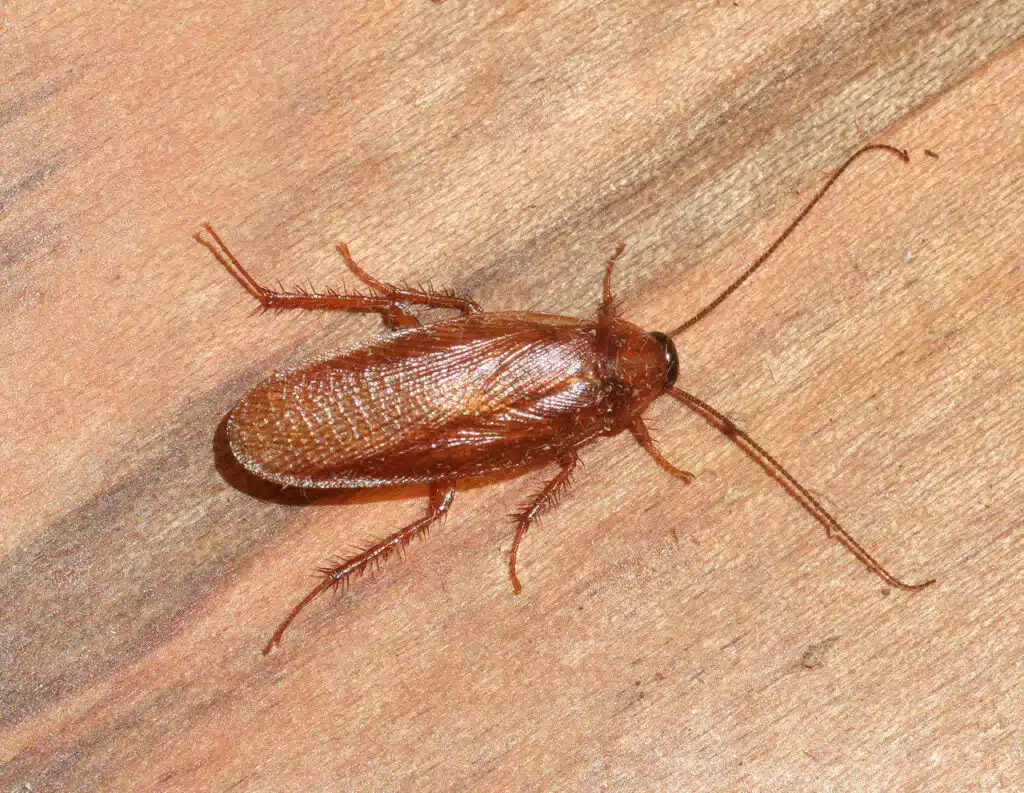
Native to Eastern US territories, the Virginia Wood Cockroach (Parcoblatta virginica) is a species of brown and dark brown roaches.
It lives in woodlands preferring to feed on various types of vegetation, particularly decaying vegetation.
Virginia Wood Cockroaches may sometimes be confused with American Cockroaches based on their size.
Both species grow to a size of 1.6 inches but the Virginia Wood Cockroach has darker brown nuances.
The pest status of the bug also differentiates it from American Cockroaches. Most Virginia Wood Cockroaches live outdoors.
Only homes close to woodlands might attract occasional Virginia Wood Cockroaches.
17. Asian Cockroach
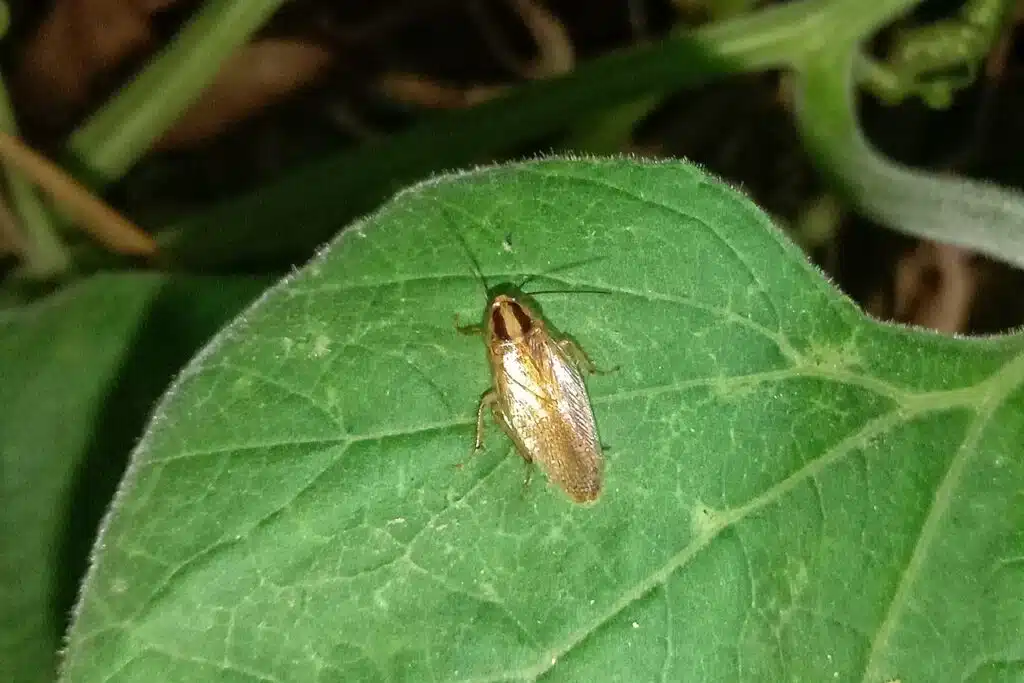
A tan to brown color makes the Asian Cockroach (Blattella asahinai) a similar species to The German Cockroach.
This species is seen in North America, with a considerable Florida presence.
Pine mulches and cypress mulches offer a shaded habitat this species loves.
Occasional presence in homes is also noted for the Asian Cockroach. A similar omnivorous diet is specific to the species as is the case with other common roaches.
This species is found on crops and in gardens. It feeds on decaying plant matter and on feces or rodent droppings which makes it a potentially dangerous pest.
Asian Cockroaches are a pest in the summer when they might make it indoors after coming in contact with feces and human waste.
This species also has a minor positive role in some areas of the United States.
It has a predator status of bollworms across Texas which makes it a beneficial roach on soybean crops.
18. Dark Wood Cockroach
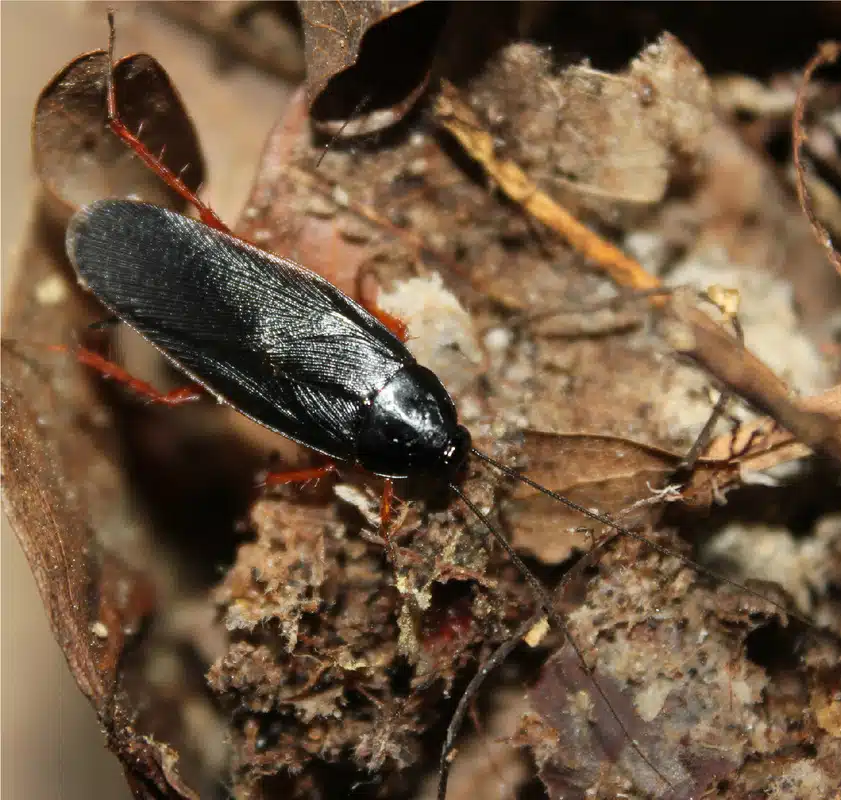
Adults are mostly black with orange legs while Dark Wood Cockroach nymphs look exactly like smaller adults.
This species is attracted to light and might get indoors at night as a nocturnal roach.
However, it prefers to live outdoors next to wood and decaying plant matter.
The roach can enter homes by accident with firewood or with a piece of infested wood or by following light sources in the evening.
19. Dusky Cockroach
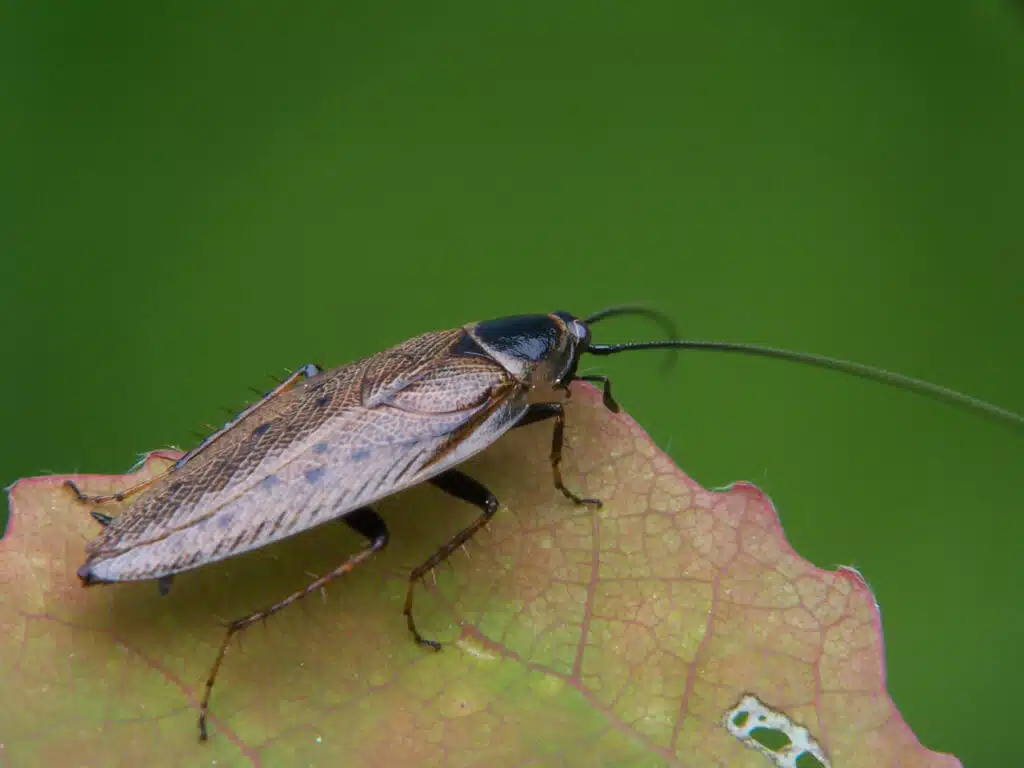
This species of cockroach (Ectobius lapponicus) has similar color combinations to the Dark Wood Cockroaches.
It has a dark brown color that may appear as black and orange legs sticking out sideways.
This species is found under organic debris feeding on organic or decaying materials.
Firewood is one of the common places where the Dusky Cockroach hides. It may even end up in the house when you bring firewood indoors.
Growing to a size of around 10mm, this is a species that prefers to live outdoors.
It may get indoors when seeking food or shelter or when attracted to light at night.
Homes surrounded by vegetation are more likely to be seen as a good habitat by the species.
20. Field Cockroach
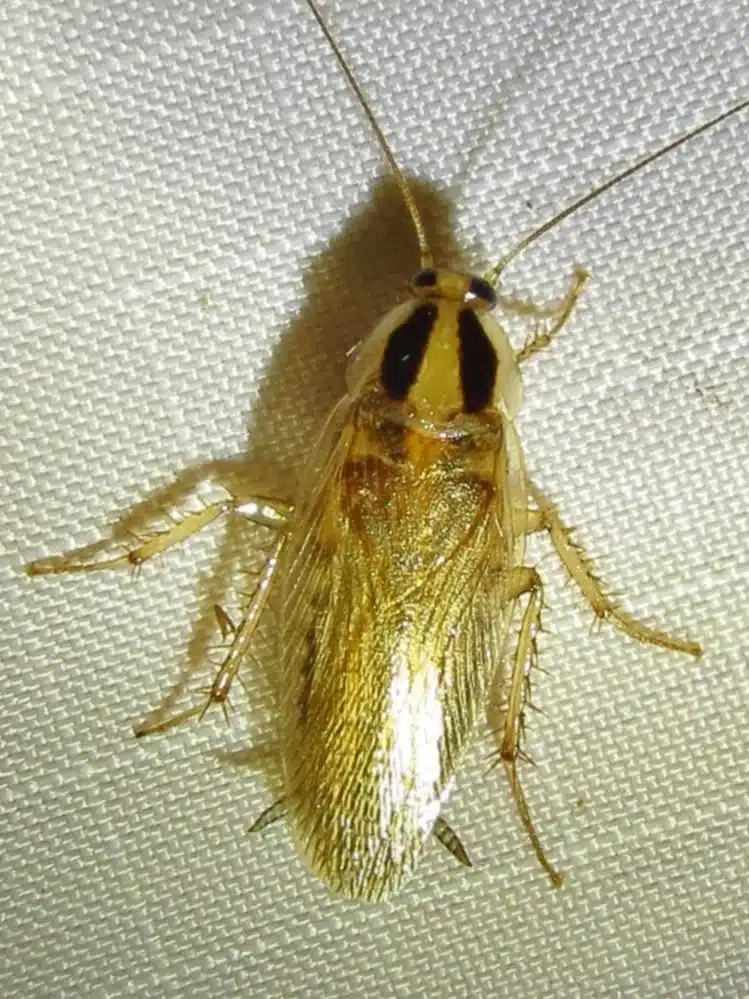
This brow-golden cockroach (Blattella vaga) is native to many places around the world. It can be found in North America, Europe, and Asia.
Vegetation is the main food source for this scavenger. It mostly eats decaying vegetation.
A common sight across Southern US states, this species is also present in high numbers across Mexico.
It loves woodlands and naturally moist areas with plenty of decaying vegetation to feed on.
21. Brown-banded Cockroach
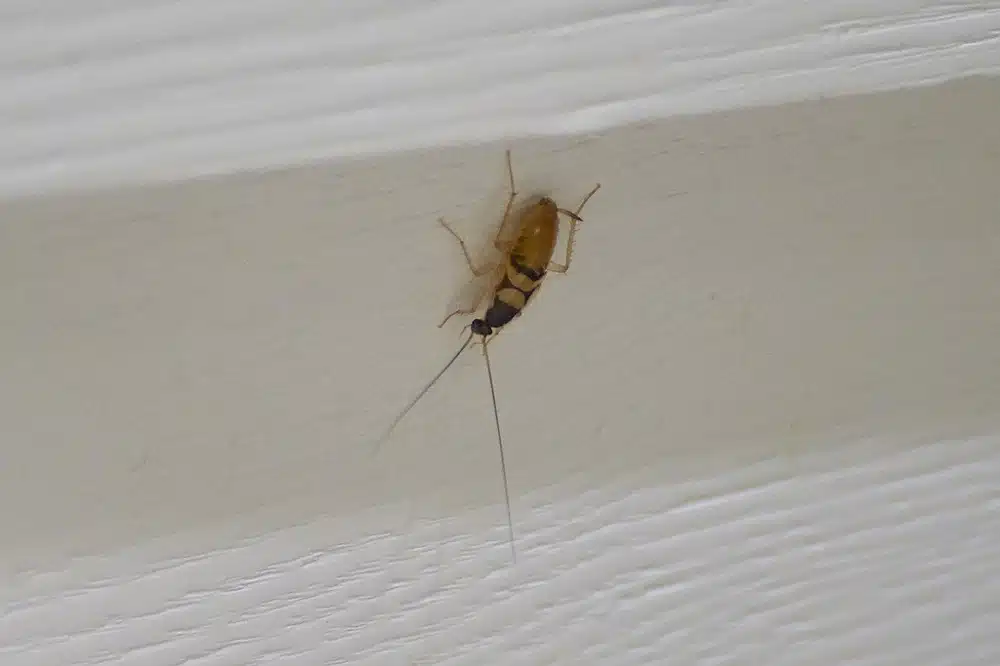
This species of cockroach (Supella longipalpa) has a light color with dark bands as a nymph and a brown color with 2 bright bands as an adult.
Once the most common cockroach in states such as Hawaii, the Brown-banded Cockroach is one of the species with potential adverse health risks to humans.
As with all roaches that can invade homes in high numbers, Brown-banded Cockroaches have been associated with a series of allergies.
These cockroaches thrive in warm climates and they seek out warm buildings to live in when the weather gets cold.
22. Brown-hooded Cockroach
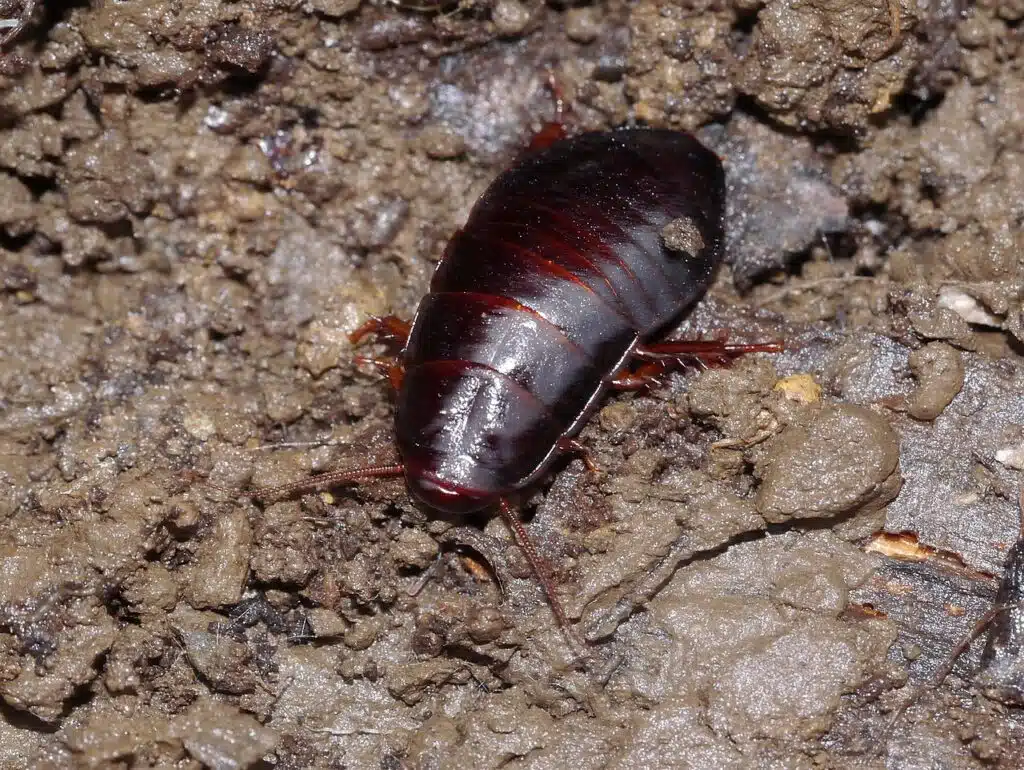
The Brown-hooded Cockroach (Cryptocercus punctulatus) has a dark brown color.
Native to North America, the species has a known status in old woodlands where there are plenty of decaying trees.
Cellulose from decaying wood is among the priorities in the diet of the Brown-hooded Cockroach. This is a species that eats decaying wood.
As a result, the Brown-hooded Cockroach cannot survive in new woodlands with young trees.
These cockroaches rarely move indoors but they can spread diseases as these cockroaches also eat feces or other roaches.
Brown-hooded Cockroaches aren’t seen as pests as they only enter homes by accident.
23. Bilunate Cockroach

This brown cockroach (Ischnoptera bilunata) is a North American native.
Its habitat expands from Florida to Texas and Arizona.
Mostly a Southern species, Bilunate Cockroaches get their name from the 2 dark brown spots visible on their heads.
Feeding on decaying organic matter, the species is also known for having very long antennae that are even longer than the roach itself.
24. Uhler’s Wood Cockroach
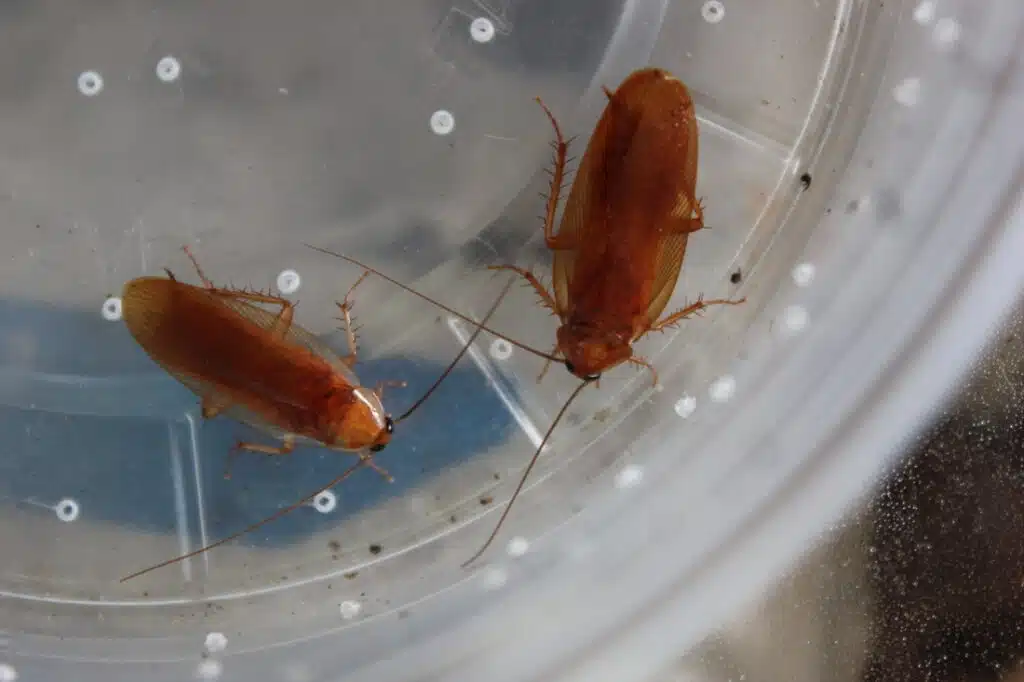
Uhler’s Wood Cockroach (Parcoblatta uhleriana) is a species that mostly lives in woodlands. The species lives in all types of woodlands, particularly with old and decaying trees.
It may enter homes at times, but only briefly, and only the homes located close to woodlands.
A brown to dark brown color is specific to the species.
Smaller than German Cockroaches, Uhler’s Wood Cockroach grows to a size of up to 0.6 inches in the case of males and 0.5 inches in the case of females.
This species prefers to live under leaf litter. Dry and wet leaves both provide the moisture and food this scavenger needs.
These roaches also live under loose tree bark and logs.
Uhler’s Wood Cockroaches can be found across Eastern US states as well as in Canada.